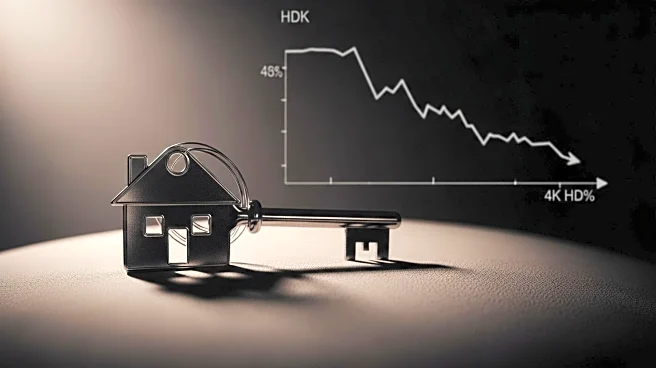What's Happening?
The U.S. housing market is experiencing a slow transition towards a more buyer-friendly environment as mortgage rates have decreased to 6.56% in September 2025, down from a peak of 8% in late 2023. This decline offers some relief to potential homebuyers, although rates remain higher than pre-pandemic levels. Concurrently, the growth in home prices has moderated, with the median list price increasing by 0.5% year-over-year to $439,450. Despite these changes, the market continues to face structural challenges, including affordability constraints and inventory imbalances. The Federal Reserve's dovish stance and easing inflationary pressures have contributed to the reduction in mortgage rates, which has led to a modest increase in housing demand, as evidenced by a 5.2% rise in housing starts in July 2025.
Why It's Important?
The decline in mortgage rates is significant as it impacts the affordability and accessibility of housing for many Americans. While the reduction in rates provides some relief, the overall affordability of housing remains a challenge, with prices still 70% higher than the pre-pandemic average. This situation affects potential homebuyers and the broader real estate market, influencing investment strategies and economic stability. The regional disparities in home price growth, with the Northeast and Midwest seeing increases while the South and West experience declines, further complicate the market dynamics. These trends highlight the importance of strategic investment decisions in the housing sector, particularly in regions with undersupplied markets.
What's Next?
Looking ahead, the Federal Reserve's anticipated rate cuts in September 2025 could further ease borrowing costs, although their impact may be limited by ongoing economic challenges, such as high home prices and low inventory levels. Investors and stakeholders in the housing market will need to navigate these complexities, balancing the potential benefits of lower rates with the persistent affordability issues. The market's gradual shift towards equilibrium suggests that opportunities may arise for long-term investments, particularly in regions and sectors poised for growth.
Beyond the Headlines
The current housing market dynamics underscore broader economic and social implications, including the need for policy interventions to address affordability and supply shortages. The ongoing regional disparities in home price growth reflect deeper structural issues that may require targeted solutions to ensure equitable access to housing across different areas. Additionally, the performance of housing-related equities, such as REITs and homebuilder stocks, indicates a shifting investment landscape, with potential opportunities in sectors like industrial and data centers driven by technological advancements.












